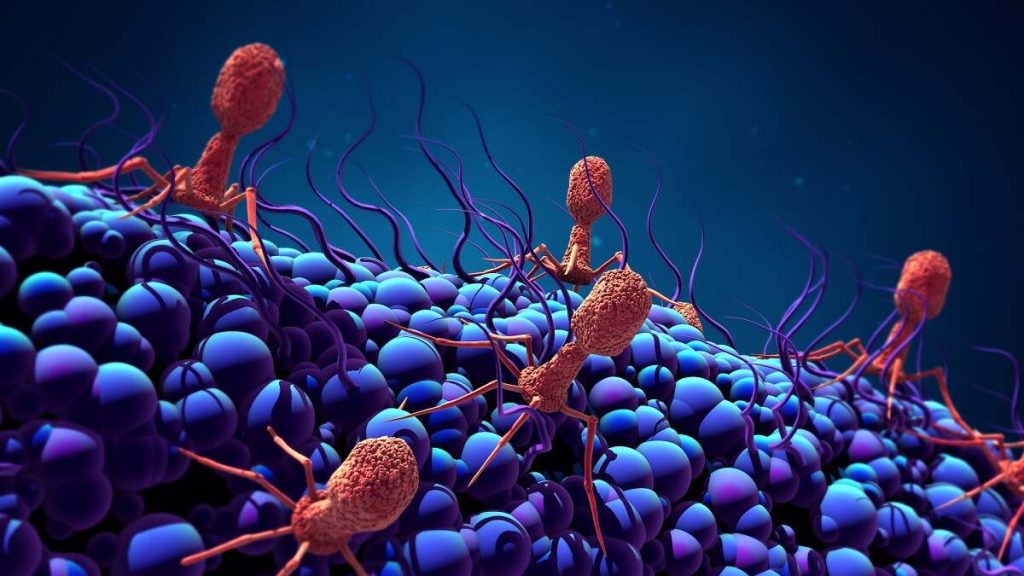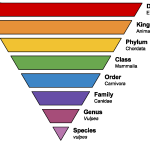Microorganisms are a collection of organisms that share the characteristic of being visible only with a microscope. They constitute the subject matter of microbiology.
Members of the microbial world are very diverse and include the bacteria, cyanobacteria, rickettsiae, chlamydiae, fungi, unicellular (single-celled) algae, protozoa, and viruses. The majority of microorganisms contribute to the quality of human life by doing such things as maintaining the balance of chemical elements in the natural environment, by breaking down the remains of all that dies, and by recycling carbon, nitrogen, sulfur, phosphorus, and other elements.
Some species of microorganisms cause infectious disease. They overwhelm body systems by sheer force of numbers, or they produce powerful toxins that interfere with body physiology. Viruses inflict damage by replicating within tissue cells, thereby causing tissue degeneration.
Classification of Microorganisms
The Taxonomic Scheme
Bacterial taxonomy is the rank-based classification of bacteria.
Taxonomic Systems
Bacterial taxonomy is the rank-based classification of bacteria. In the scientific classification established by Carl von Linné, each distinct species is assigned to a genus using a two-part binary name (for example, Homo sapiens). This distinct species is then in turn placed within a lower level of a hierarchy of ranks. These ranks range in ascending scale from family to suborder, and upward to order, subclass, class, division/phyla, kingdom and domain.
In the currently accepted scientific classification of Life, there are three domains of microorganisms: the Eukaryotes, Bacteria and Archaea, The different disciplines of study refer to them using differing terms to speak of aspects of these domains, however, though they follow similar principles. Thus botany, zoology, mycology, and microbiology use several different conventions when discussing these domains and their subdivisions. In zoology, for example, there are type specimens, whereas in microbiology there are type strains.
Historical Challenges of Classification
Despite there being little agreement on the major subgroups of the Bacteria, gram staining results were commonly used as a classification tool. As an example, Prokaryotes share many common features, such as lack of nuclear membrane, unicellularity, division by binary-fission and generally small size. Until the advent of molecular phylogeny the Kingdom Prokaryotae was divided into four divisions, a classification scheme still formally followed by Bergey’s manual of systematic bacteriology.The various species differ amongst each other based on several characteristics determined by gram staining, which allowed their identification and classification. Major groups of this system include: Gracilicutes (gram negative); Firmacutes (gram positive); Mollicutes (gram variable, e.g. Mycoplasma); and Mendocutes (uneven gram stain, “metlynogenic bacteria” now known as the Archaea).
Molecular Classification
In the Molecular era of classification, Carl Woese, who is regarded as the forerunner of the molecular phylogeny revolution, argued that the bacteria, archaea, and eukaryotes represent separate lines of descent that diverged early on from an ancestral colony of organisms. However, a few biologists argue that the Archaea and Eukaryota arose from a group of bacteria. In any case, it is thought that viruses and archaea began relationships approximately two billion years ago, and that co-evolution may have been occurring between members of these groups. It is possible that the last common ancestor of the bacteria and archaea was a thermophile, which raises the possibility that lower temperatures are “extreme environments” in archaeal terms, and organisms that live in cooler environments appeared only later. Since the Archaea and Bacteria are no more related to each other than they are to eukaryotes, the term prokaryote’s only surviving meaning is “not a eukaryote”, limiting its value.
With improved methodologies it became clear that the methanogenic bacteria were profoundly different and were erroneously believed to be relics of ancient bacteria. Thus, though Woese identified three primary lines of descent the Archaebacteria, the Eubacteria and the Urkaryotes, the latter now represented by the nucleocytoplasmic component of the Eukaryotes. these lineages were formalised into the rank Domain (regio in Latin) which divided Life into 3 domains: the Eukaryota, the Archaea and the Bacteria. This scheme is still followed today.
In 1987 Carl Woese divided the Eubacteria into 11 divisions based on 16S ribosomal RNA (SSU) sequences, which with several additions are still used today.

Prokaryote phylogeny diagram: Phylogenetic tree showing the relationship between the archaea and other forms of life. Eukaryotes are colored red, archaea green and bacteria blue.


